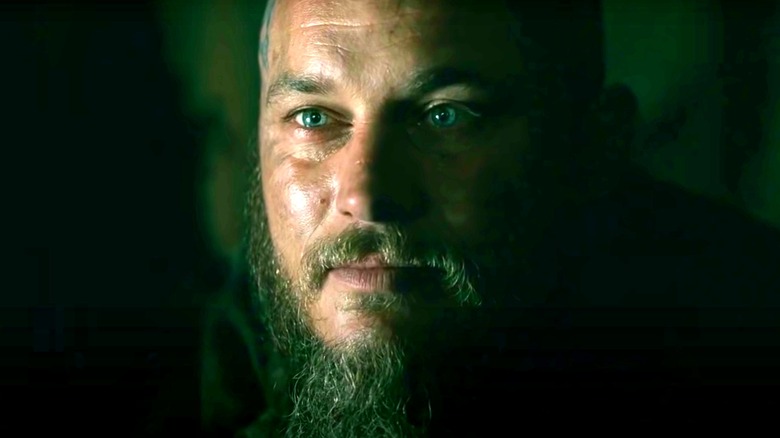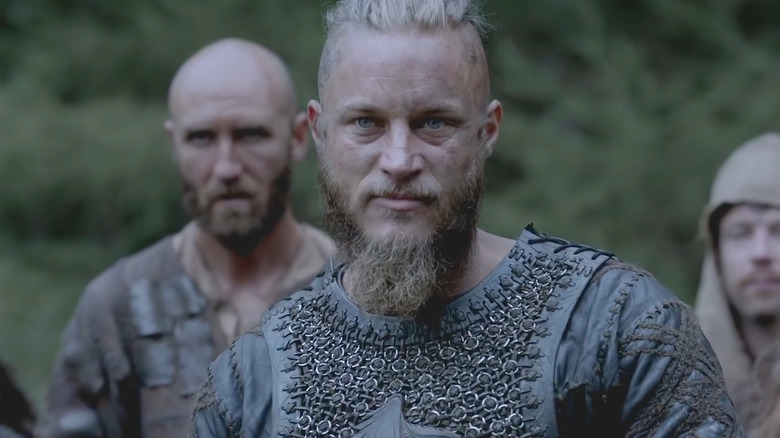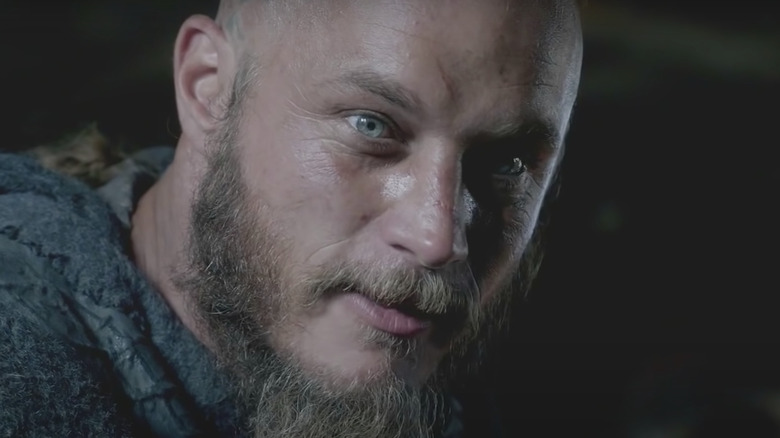The Real Meaning Behind Ragnar's Name On Vikings
For 45 episodes, Australian-born star Travis Fimmel took on the role of a lifetime from an era long forgotten in History's "Vikings." Debuting in 2013, Fimmel played Ragnar Lothbrok, a simple farmer who eventually became a name respected and feared among the Viking people, so much so that his legacy continued long after his passing. Braving seas that others hadn't, his determination led him to the foreign shores of places like the British Isles and France, cementing his name in Viking history.
But what's in a name, after all? The mention of Ragnar Lothbrok certainly struck terror into the hearts of his enemies on History's much-loved show, but just what was its origin? As it turns out, records confirm a man named Ragnar did live, rule, and raid during the Viking era, and his name meant a whole number of things that were perfectly fitting of the man it was linked to.
Ragnar was an army of one, and had a name to match
Concerning Viking history, one often visited reference point is the Gesta Danorum, a record of Danish history by Saxo Grammaticus from the 12th Century (via Brittanica). Detailing the history of Estonia and Latvia, there is mention of Ragnar Lothbrok, who was a legendary hero who was also a Danish and Swedish king. This regal pillar of the Viking era had a Germanic name from Old Norse. Broken up, the first name Ragnar came from "ragin-," meaning "counsel," and "hari," which in English means "army," according to Name Doctor. There's also the clearer link to "Ragnarök" — the Viking term that refers to the end of all things, and not a Marvel film with a rock monster who sounds like he's from New Zealand.
Given the era Ragnar came from, it was a perfect fit for a would-be king to be linked to these two words, given that without either, he'd struggle to be king at all. That then brings us on to what we would nowadays consider as Ragnar's surname — Lothbrok, or Lodbrok as it is also known. While the front end of this legendary Viking's name was no doubt a way of talking a big game, carrying around a title that literally meant the end of all things, the second name for our Viking hero was something far less intimidating. As it turns out, the nickname that was given to this icon from Viking history was surprisingly linked to his dress code.
Ragnar Lothbrok was all about his clothing style
When it comes to Ragnar's last name, it'd be easy to see it as a slight more than an honorable epithet to one of the most famous Viking figures in history. "Lothbrok" wasn't a surname, but a name fitted for him for his supposed "hairy-breeches" or "Shaggy-breeches," which leads into the somewhat (ahem) fabricated parts of Ragnar's history. While it may have suggested Ragnar didn't wear the best fit in clothing, he actually earned this title after taking on a dragon and wore the aforementioned attire to win the battle and protect himself (via WorldHistory.org). He also wore the same fit when he invaded England, which ultimately led to his death — as shown in History's series when he was thrown into a snake-pit.
Thankfully, even with his shaggy-breeches, Ragnar's name still held weight even after his passing, allowing his family to continue on his legacy that is even mentioned in "Vikings: Valhalla," the Netflix spin-off show that is set 100 years after the events of the original series. What's in a name? Turns out, an awful lot.


